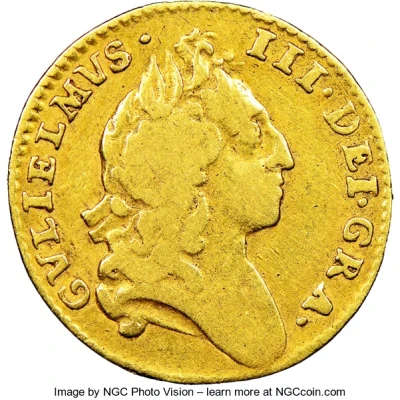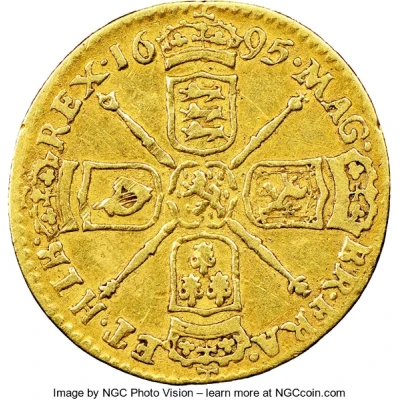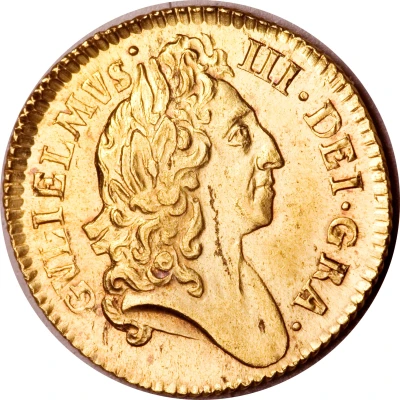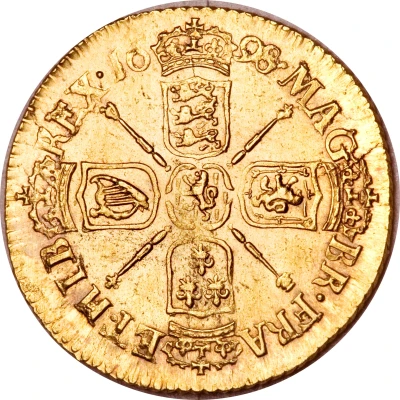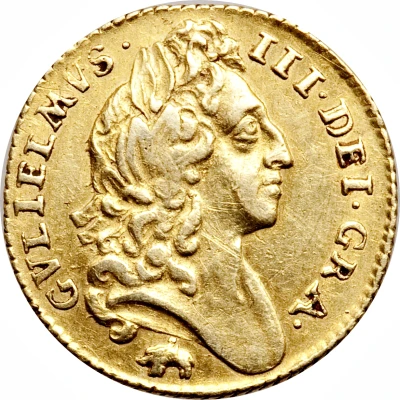
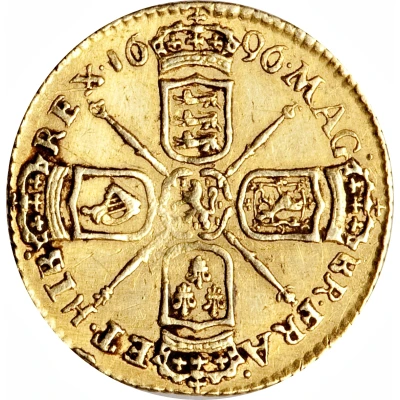

© Heritage Auctions
½ Guinea - William III early harp
| Gold (.917) | 4.19 g | - |
| Issuer | England (United Kingdom, British Overseas Territories and Crown Dependencies) |
|---|---|
| King | William III (1694-1702) |
| Type | Standard circulation coin |
| Years | 1695-1696 |
| Value | ½ Guinea |
| Currency | Pound sterling (1158-1970) |
| Composition | Gold (.917) |
| Weight | 4.19 g |
| Shape | Round |
| Technique | Milled |
| Orientation | Coin alignment ↑↓ |
| Demonetized | Yes |
| Updated | 2024-10-08 |
| Numista | N#53607 |
|---|---|
| Rarity index | 100% |
Reverse
Crowned cruciform shields around central Nassau lion with sceptres bearing national emblems in angles, divided date above, legend around.
Note: early harp
Script: Latin
Lettering: MAG· BR·FRA· ET·HIB· REX·16 96·
Translation: King of Great Britain France and Ireland
Edge
Diagonal reeding
Comment
These coins were struck at 89 to the pound troy, giving a standard weight of 12/89 troy ounce (64.7 grains).During the period 1696 to 1698, the half guinea's value rose to 15 shillings, then was reduced in stages by Act of Parliament until it settled at 10 shillings 9 pence in 1698.
Interesting fact
One interesting fact about the ½ Guinea - William III (early harp) coin is that it was minted during a time of great economic change in England. The coin was introduced in 1695, just a few years after the Great Recoinage of 1692, which aimed to address the issue of clipped and worn coins in circulation. The ½ Guinea coin was a new denomination that was introduced as part of this recoinage effort and was designed to be a more convenient and practical alternative to the larger 1 Guinea coin. Despite its small size, the ½ Guinea coin was made of gold (.917) and weighed 4.19 grams, making it a valuable and sought-after coin among collectors today.
